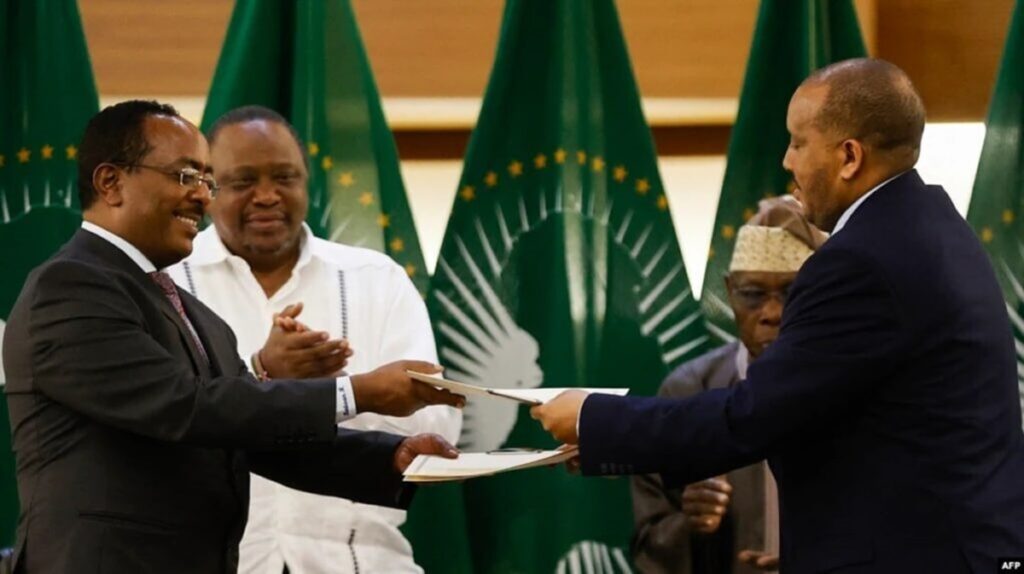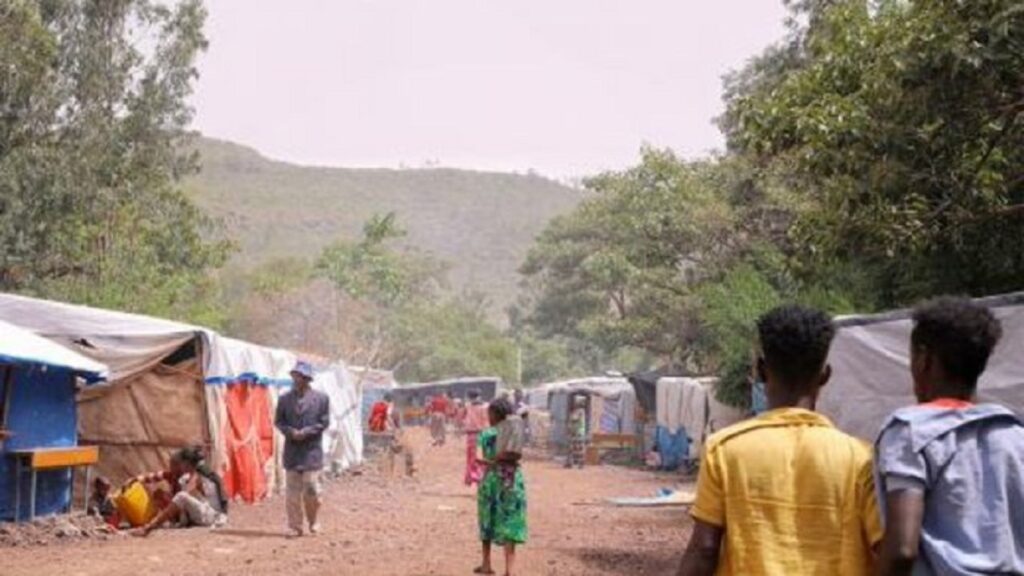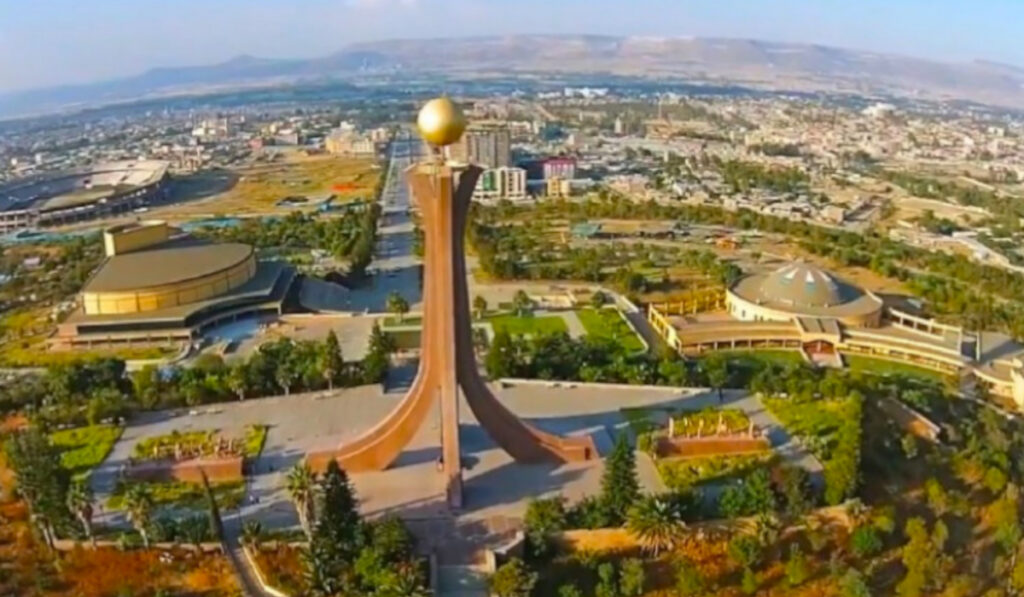
By Million Beyene @MillionBeyene
Addis Abeba – The Tigray war came to an end over a year ago, after lasting for two tumultuous years and resulting in the tragic loss of over half a million lives. The cessation of hostilities occurred in Pretoria, South Africa, where key participants in the war, the federal government and Tigray forces, reached a consensus and signed a peace agreement.
This historic accord received wide acclaim for bringing much-needed relief and hope to a society that had been battered by one of the world’s deadliest conflicts in recent memory. However, despite making some progress, the implementation of critical elements of the agreement has been delayed.
Now, one year after the signing of the Pretoria agreement, intellectuals and analysts from the Tigray region are reflecting on their initial expectations, the successes achieved so far, and the challenges that lie ahead.
One of the primary expectations of Tsegazeab Kassa, a historian and political analyst, was that the agreement would pave the way for immediate and unimpeded humanitarian access to provide life-saving food and medical aid to civilians.
On the other hand, scholars like Gebremedhin Gebremichael (PhD), a lecturer of political science at Mekelle University, had envisioned the agreement leading to the prompt return of all displaced people in Tigray, the withdrawal of Eritrean and Amhara forces, and the peaceful reintegration of ex-fighters into society.
Tsegazeab Kahsu (PhD), who is also a prominent figure in the political party Baitona Tigray, had hoped that the agreement would quickly catalyze comprehensive peace and reconstruction efforts throughout the region. While acknowledging that progress has fallen short of expectations, he highlighted modest achievements such as the partial resumption of schooling and the provision of basic health services to the population.
Victories, setbacks
When evaluating the progress of the peace agreement so far, both Tsagazeab and Gebremedhin emphasize that the most significant achievement has been the cessation of hostilities. “The major achievement of the agreement is that it successfully halted casualties and shifted the focus from war to peaceful dialogue,” said Tsagazeab.
The political analyst also points out additional positive outcomes, such as improvements in transportation and the disarmament of Tigray militants through the disarmament, demobilization, and reintegration (DDR) process.
However, Gebremedhin highlights the equally important shortcomings of the agreement. He states, “The agreement failed to ensure unrestricted access to aid and medicine for the population.”
The major achievement of the agreement is that it successfully halted casualties and shifted the focus from war to peaceful dialogue.”
Tsegazeab Kassa, a political analyst
Despite the resumption of aid to Tigray following the peace agreement in November 2022, the World Food Program (WFP) and the U.S. Agency for International Development (USAID) halted the provision of humanitarian assistance in May 2023 due to alleged reports of aid diversion.
In August 2023, the WFP declared the restart of delivering food aid to the conflict-ridden Tigray region. Nonetheless, local authorities contested this announcement, asserting that it misconstrued the reintroduction of a safety net program as the reinstatement of humanitarian assistance. On 15 November, 2023, the USAID made known its plans to recommence crucial food assistance in Ethiopia within a month.
Even before the aid suspension, the amount of aid being delivered was insufficient. According to a recent OCHA report, humanitarian organizations were only able to meet an average of 40% of the monthly kilocalorie requirements for over 2.3 million people in Tigray between January and March 2023.
Gebremedhin echoes similar sentiments. “While the agreement may protect individuals from armed violence, it has failed to address the issues of hunger and disease.”
The humanitarian situation in the region has worsened, primarily due to the ongoing suspension of aid, resulting in the loss of lives, including those of children. A joint study conducted by the Tigray Health Bureau, Tigray Health Research Institute, and Mekelle University reveals that a minimum of 1,329 people, including 230 children, have succumbed to hunger and malnutrition in just nine districts within the region over a nine-month period leading up to August 2023.
However, the crisis was already severe even before the aid suspension, as a significant diversion obstructed vital assistance from reaching its intended recipients, leading to further tragedies. According to the bureau, since the outbreak of war in Tigray in November 2020, at least 2,850 children have died in hospitals due to acute malnutrition.
In addition to the humanitarian disaster, the political analyst also emphasizes the failure to return over a million displaced individuals to their homes, which breaches the anticipated post-agreement restoration.
Gebremedhin, on the other hand, stated that the dream of displaced persons returning to their villages has been shattered. As evidence, he exemplified the alarming trend of an increasing number of displaced persons leaving their villages, particularly from the southern and western regions of Tigray, in the aftermath of the agreement.
During the war, more than 2.3 million people in Tigray were residing in different IDP camps. According to OCHA, nearly 1.5 individuals who were displaced have returned to their homes since the signing of the peace agreement in November 2022, though without receiving any assistance. Currently, there are over one million internally displaced people sheltered in IDP camps across the region.
The IDPs residing in various camps continue to endure harrowing conditions due to suspended food aid and persistent security issues, especially in the western and northeastern parts of Tigray, resulting in a surge in deaths related to hunger.
Tsagazeab, the political analyst, further expresses deep concern over ongoing violence and repression by occupying forces in the region, which contradicts the expectations of the agreement. “The federal government has not fulfilled one of the agreements, which is to ensure the withdrawal of the Eritrean army and Amhara forces from the occupied areas of the region,” he stated.
Despite Article 2.1/d of the executive declaration on the modalities for the implementation of the Pretoria agreement, signed in Nairobi on November 12, stating that “disarmament of heavy weapons will be done concurrently with the withdrawal of foreign and non-ENDF forces from the region,” forces from the neighboring Amhara regional state and Eritrea still maintain a presence in the Tigray region.
The Amhara forces control western Tigray and parts of southern Tigray, while Eritrean forces still control parts of the north and northeast areas of the region.
During his address to Members of Parliament yesterday, Prime Minister Abiy Ahmed stressed that the resolution for these “disputed” areas will be determined through a referendum. The PM also expressed the government’s willingness to consider alternative solutions to resolve the issue.

Nevertheless, Tsagazeab of the Baytona Party criticizes the absence of political dialogue to address the underlying causes of the conflict, arguing that the failure to initiate these discussions risks the resurgence of conflict. He also notes that while the DDR process is expected to be lengthy, less has been done, particularly in terms of political representation for the people of Tigray in the federal government.
Since the regional government, led by TPLF, recalled all representatives from the House of Peoples’ Representatives and the House of Federation in October 2020, the Tigray region has had no representation at the federal level.
Who’s to blame for the failure?
When assessing accountability for the incomplete implementation of the Pretoria Peace Agreement after one year, scholars and politicians stress that the primary responsibility lies with the signatories, namely the federal government and the TPLF (Tigray People’s Liberation Front), as per consensus. However, Gebremedhin argues that the federal government and its allies play a major role in securing the expected budget support for the disarmament, demobilization, and reintegration (DDR) process of internal combatants, which is a crucial aspect of the peace agreement.
The federal government’s communication service issued a statement on the first anniversary of the agreement, outlining numerous steps taken to adhere to the agreement and normalize life in the northern region of Ethiopia. These measures include ceasing military operations against the TPLF, expediting humanitarian assistance, and establishing a rehabilitation commission for demobilizing former TPLF combatants.
The federal government has also pledged to intensify its commitment to fully implement the Pretoria Peace Agreement, despite delays from the Tigray Interim Administration, specifically regarding the disarmament of former combatants. However, Tsagazeab of the Baytona Party emphasizes the substantial accountability of the federal government, arguing that it has a dual obligation to serve citizens and uphold the agreed stipulations.
At the federal level, the National Rehabilitation Commission (NRC) was established in December 2022 to oversee the demobilization and rehabilitation of former combatants. So far, the commission has registered 371,971 ex-combatants from eight regional states, with approximately 70% originating from the Tigray region.
Officials have acknowledged that the commission has experienced delays in implementing the demobilization activities, originally planned for September, due to inadequate resources. In a May 2023 interview with Addis Standard, Ambassador Teshome Toga, the commission’s head, emphasized the significant resources required for the DDR program to achieve efficient success.
Gebremedhin points out that the federal government’s effectiveness in this regard might be compromised due to a possible shortfall in financial support from international parties who committed aid during the negotiations.
The commission estimates a budget of $800 million for the program, with 85% of the funding sourced from international organizations such as the World Bank, while the remaining portion is covered by the federal government.
Gebremedhin also notes that the role of potential obstacles also deserves scrutiny. “Additionally, entities instrumental in brokering the agreement, such as the African Union, should share some responsibility for its incomplete realization,” he said. “However, they seem to maintain a stance of neutrality in this complex situation.”
The rehabilitation and reintegration process of ex-fighters conducted at a regional level also encountered obstacles. Although General Tadesse Werede, the deputy president of the Tigray Interim Administration, made an announcement in July 2023 regarding the progress of demobilization in the region, stating that more than 50,000 former combatants had been successfully demobilized during the initial phase, a recent report by Addis Standard paints a different picture on the ground.
It reveals that not all ex-fighters have been fully demilitarized, as thousands are still awaiting their certificates. This includes disabled fighters who are currently undergoing medical treatment in military facilities. Apart from disabled ex-fighters receiving medical care in different military camps throughout the region, many ex-fighters who have been demobilized by the Tigray Interim Administration are facing challenges in supporting their families due to limited resources and a lack of proper rehabilitation. Given the small amount of money they received, some of them are unable to reintegrate into normal life.
Entities instrumental in brokering the agreement, such as the African Union, should share some responsibility for its incomplete realization.”
Gebremedhin Gebremichae (PhD), a lecturer of political science at Mekelle University
Gebremedhin suggests that any deficiencies in the accomplishments of Tigray’s negotiators could be attributed to their limited capacity. “The DDR process is fundamentally the federal government’s priority, with disarmament being the primary objective,” he says. However, he warns against absolving the TPLF of its responsibilities.
Gebremedhin also indicates that the absence of a structured reintegration process could predominantly affect the TPLF and the Tigray region. “Conversely, a continuation of the current situation would exert considerable pressure on both the TPLF and Tigray.”
Which side profited the most?
Gebremedhn unequivocally believes that the federal government has been the main beneficiary of the Pretoria Agreement, highlighting that the agreement led to a decrease in international diplomatic and economic pressure on the federal government. Furthermore, he states that the agreement enabled the federal government to sideline other parties in the conflict, thereby strengthening its control over the agreement’s execution.
However, Gebremedhn is uncertain about the gains achieved by forces in Tigray, despite acknowledging that the agreement helped prevent further loss of life. He states, “The agreement at least succeeded in sparing the people from the immediate violence associated with armed conflict.” His uncertainty arises from the failure to repatriate evacuees and maintain the region’s territorial integrity.
On the other hand, Tsagazeab from the Baitona Party argues that the federal government strategically regained what it had lost in the conflict through political maneuvers. However, he claims that this victory was achieved through selective implementation of the agreement. He accuses the government of adhering only to parts of the agreement that serve its own agenda while neglecting overall fulfillment.
“This selective adherence indicates the government’s strategic use of the agreement to advance its own interests,” Tsagazeab from the Baitona Party stated. AS
 Blinken urges political dialogue amid rising violence in Ethiopia’s Amhara region, reaffirms US support for Pretoria Agreement
Blinken urges political dialogue amid rising violence in Ethiopia’s Amhara region, reaffirms US support for Pretoria Agreement News: TPLF calls for full Implementation of Pretoria peace deal on second anniversary, citing ‘unfulfilled’ commitments
News: TPLF calls for full Implementation of Pretoria peace deal on second anniversary, citing ‘unfulfilled’ commitments